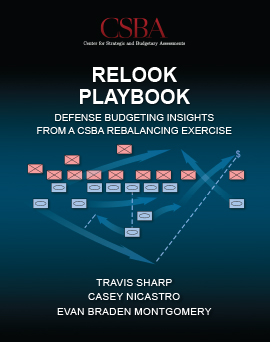
In February 2025, Defense Secretary Pete Hegseth directed the Pentagon to reexamine the 2026 budget request, which has been drafted but not sent to Congress, to ensure that it reflected the Trump administration’s priorities. Specifically, he tasked the military departments and defense agencies with identifying lower-priority activities totaling 8 percent of their projected annual budgets from 2026 to 2030. These lists of potential cuts will create a substantial pool of money available for potential reallocation.
The 8 percent relook provides an opportunity for senior civilian officials to imprint their preferences on the Department of Defense budget and better prepare the Pentagon to compete with China. In Relook Playbook, CSBA authors Travis Sharp, Casey Nicastro, and Evan Braden Montgomery provide analysts and policymakers with the information they need to better understand, execute, and evaluate this effort.
Drawing on insights from a recent CSBA Strategic Choices Exercise, the authors argue that potential defense investments fall into four main categories – top priority investments, strategy-dependent investments, resource-dependent investments, and bottom priority investments – and explain which capabilities fall into which camps. They also outline where the Pentagon might first look to save resources, the likely limits of those efforts, and where it may need to turn instead. Finally, the authors note that, absent real annual growth in the defense budget of 2 percent or more, senior officials will be forced to grapple with a set a of tradeoffs that they might not be equipped to manage.



























